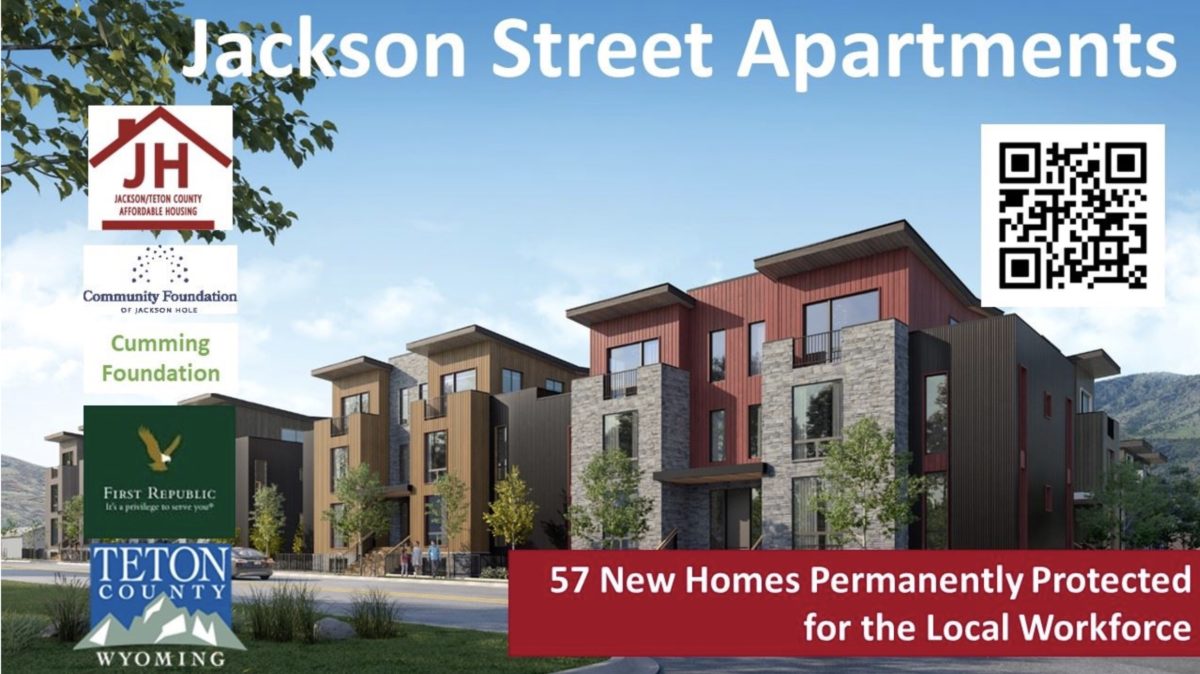How Housing Happens, Part 1: Public/Private Partnerships versus the Private Sector
I believe the community needs housing that’s 100% for local workers and 100% not for wealthy out-of-towners. Sound impossible? It’s not. But it does require a delicate balancing act of policy, zoning, private philanthropy, public financing, community outreach and thoughtful leadership. I’ve been on the front lines of zoning for 14 years and housing policy for six. I’ve helped put in place policies that built 411 units in the past few years with 358 more planned. Every one of these units is conveniently located near transit and services and available only to local workers.
There are two categories of housing in Teton County—housing that can be purchased by anyone in the world, and housing that can be purchased only by someone living and working full time in Teton County. The first category, free-market housing, is comprised of a dwindling pool of housing for local workers and an expanding pool of second homes, short-term rentals, and houses owned by hedge funds and creative ownership structures that essentially turn them into resort lodging (Pacaso, for example). At a median value of $3.1 million, the vast portion of free market single-family housing is out of reach of local workers. The second category, deed restricted housing, can only be bought or rented by local workers. It includes a supply of housing stratified by price to meet demand from various income levels. Deed restricted housing provides housing for local workers, period. The median price of a single-family deed-restricted home is around half a million dollars.
Preserving community character boils down to increasing the ratio of deed-restricted housing to free-market housing. The town and county currently deploy four strategies.
- Preserve our existing stock of housing by compensating homeowners for placing a deed restriction on their home. That leaves them the right to sell to a qualified local worker regardless of income level but not to the absolute highest bidder.
- Buy free market property where market housing or commercial development would otherwise get built and lease the land to a housing developer for almost nothing in return for guarantees that housing built on the site is deed restricted.
- Use zoning incentives to expand the earning potential of a property in exchange for the provision of “bonus” housing units, at least some of which must be restricted to local workers.
- Require developers to build some amount of deed-restricted housing to partially mitigate the need for new housing resulting from new development—a so-called mitigation requirement.
Each strategy has its plusses and minuses. The first two strategies are the most effective at improving the ratio of deed-restricted to free-market housing because they eliminate potential market housing while adding 100% deed restricted housing. But thus far preservation is rare, likely because the current maximum level of compensation, $200,000, is insufficient compensation for a deed restriction. And the second strategy costs a lot up front because the land must be bought at free market prices, funded by philanthropy and public funds (tax revenues and mitigation fees).
The second two strategies cost less because developers pay for the new housing units. However, they only add new housing when new development takes place, and the new development might generate the need for yet that much more new housing and thus do little to positively influence the final ratio of deed-restricted to market housing. Two new developments utilizing incentives to add bonus units in town, for example, are adding 62 units of housing, but only 16 of them will be deed restricted while the remaining 46 are available to anyone in the world who desires to live here, including highly paid remote workers.
A new project, the 57-unit Jackson Street Apartments, is the largest 100% deed-restricted housing project in our history. Because it’s on land that could be used for lodging and high-end housing, it’s a good example of the second strategy. It’s also the gold standard for building housing that will preserve our community by adding deed-restricted workforce housing and eliminating potential free market housing.
First, the Mayor and Town Council, through a rigorous public process, adopted zoning standards that allow for multi-family development where it makes sense within town. The Cumming Foundation purchased lots within areas newly zoned for multi-family housing that were adjacent to lots purchased years before by Teton County for county employee housing. Land and capital combined, the Cumming Foundation brought $21.5 million to the table and Teton County brought $10.5 million to the table. First Republic Bank contributed $14 million in financing at 2.5%, and a private developer will build the units. To get shovels in the ground, April Norton and Housing Department staff artfully steered the project along a narrow legal alley where public funding could leverage private philanthropy.
The county is going through its own process to rezone land, known as Northern South Park, to create opportunities for similar types of projects. The county commission, including me, denied past, well-intentioned but market-oriented efforts to build housing in this area largely because all the units would have been detached single family homes. We do need deed-restricted single-family homes, but we also need an array of housing types, including multi-family, to meet a range of incomes. Moreover, allowing the proposed subdivisions to proceed would have eliminated the opportunity now before us to create a neighborhood with a variety of deed-restricted housing on a scale that meaningfully alters the ratio of workforce housing to free-market housing in the community.
Northern South Park will push limits. [SS1] Stay tuned for my next article about how to get it right in Northern South Park.
Maximizing our opportunities to build housing that’s 100% for local workers requires thoughtful, experienced leadership. Early voting began September 23. Ballots can be cast through election day on November 8. This fall, please vote to re-elect Mark Newcomb for County Commission.

